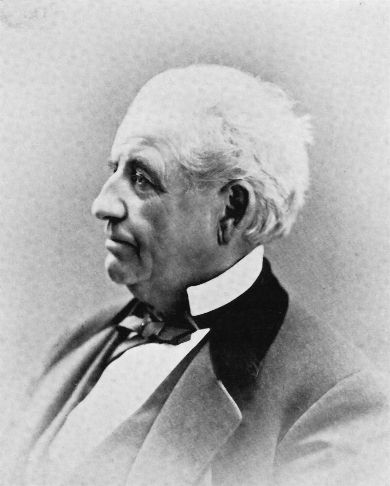
February 6, 1807 – July 12, 1888
Hiram Sibley, whose name will be forever associated with the commencement and progress of some of the great enterprises that have distinguished this age, was born at North Adams, Massachusetts, February 6, 1807, and was the second son of Benjamin and Zilpha Davis Sibley, of old New England stock. He did not have the advantages of a good early education in the schools, but as he was endowed by nature with rare mechanical genius and he had mastered five trades before he reached his majority.
In 1829, at the age of sixteen he came to Western New York and settled in Livingston county. where with his partner Don Watson, they build a sawmill, and factory, featuring the first blast furnace and machine shop in the county. The community of Sibleyville grows around him.
In 1843 he was elected Sheriff of Monroe county on the Democratic ticket and then moved from Sibleyville, in the town of Mendon, to this city. Previous to that he had been interested in the experiments of Stephen Vail and Professor Morse in telegraphy and in 1840 had gone to Washington with Morse and Ezra Cornell to promote the appropriation of forty thousand dollars by Congress to build a telegraph line from Washington to Baltimore. They secured the appropriation, and the subsequent history of the telegraph is known. Quickly following on the success of the pioneer line several telegraph companies were organized, but they were not financially successful, and Mr. Sibley bought a majority of the depreciated stock and consolidated them under one management as the Western Union Telegraph company, of which he was the first president. The initial propose of this network is to get New York City flour prices to Rochester. During the first sixteen years in which he was president of the company the number of offices was increased from one hundred and thirty-two to four thousand, and the property arose in value from two hundred and twenty thousand to forty-eight million dollars. He projected the Atlantic and Pacific line to California and it was built under his administration. Before the success of the Atlantic cable was assured Mr. Sibley was interested in the project to unite the Old and the New World electrically, by way of the Bearing straits. In promoting that enterprise he made a visit to Russia in 1864-5 and was received host cordially by the Czar, who assigned to his American guest the second place of honor at state functions the French ambassador alone taking precedence of him. The Russian government entered into co-operation with the American projectors and the line would undoubtedly have been established had not the Atlantic cable been put in operation. In addition to his labors for the introduction of the telegraph, Mr. Sibley was largely interested in promoting other enterprises of moment, including railroads and the manufacture of salt and lumber While however his commercial enterprises were of a character and magnitude that would alone perpetuate his memory Mr. Sibley has a more lasting claim to the gratitude of posterity in the institutions which he endowed for the promotion of leaning He established Sibley Hall for the use of the library of the University of Rochester at a cost of one hundred thousand dollars, and provided for the free use of the library by the public. He also endowed the Sibley College of Mechanics' Arts at Cornell University at a cost of two hundred thousand dollars. Mr. Sibley was married to Elizabeth M. Tinker at North Adams, Massachusetts. He died at his home in this city July 12, 1888. His surviving children are Hiram W. Sibley and Mrs. James S. Watson.
Biographical Sketch from 'Rochester and the Post Express' 1895
Hiram Sibley Building (1925) Design based on Christopher Wren's wing of Hampton Court, England. Built in his memory by his son Hiram Sibley, Jr.